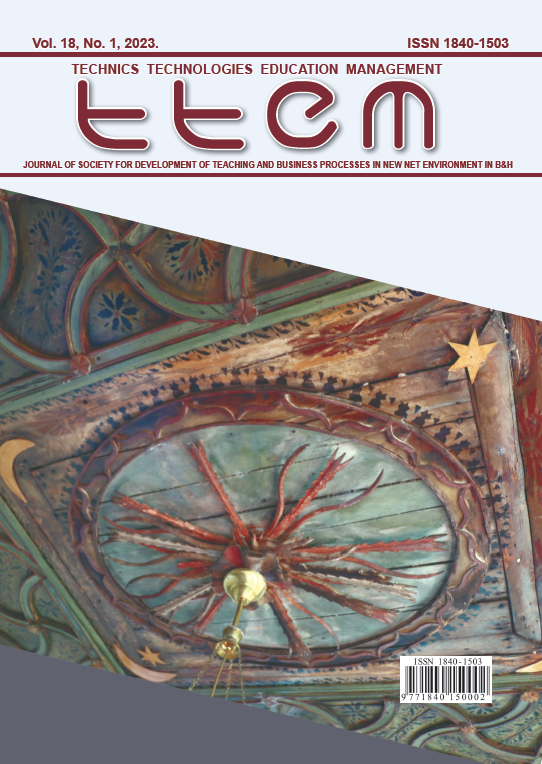Analysis of the Perceptual Space in the Movie La Cara Oculta

Emine Köseoğlu, Gizem Nur Öncü
Fatih Sultan Mehmet Vakif University, İstanbul, Turkey.
Abstract
_________________________
The phenomenon intended to be conveyed in cinema is communicated to the audience through fictionalized spaces. The space defined by architectural elements is experienced through the senses and the character’s relationship with the place in the film is conveyed to the audience, eliciting a response to the fictionalized scene. “La Cara Oculta” is a film that unfolds within a single location, portraying the story of Belen, the main character, who becomes trapped in a secret shelter within the house she shares with her partner Adrian. The examination of the relationship between Belen and the space she inhabits throughout the course of these events proves to be of significant interest. For this reason, the film is worth examining. In this study, qualitative research methods were used, with a case study design on La Cara Oculta. Following a purposeful sampling approach that emphasizes spatial perception and psychology, specific scenes were carefully chosen and analyzed using thematic analysis. Consequently, 24 scenes yielded 12 distinct codes, which were subsequently grouped into three overarching themes that explore the relationship between space and human experience: spatial boundary, spatial atmosphere, and spatial confinement. The study aims to address inquiries regarding how architectural space elements influences spatial perception, how spatial experiences evolve, and how spaces can be transformed into fear-inducing environments. The film’s demonstration of how the space can cause psychological disorders emphasizes its intersection with architecture. Thus, this study is instructive in understanding the concept of architectural space.
Keywords: Perceptual Space, Senses, Architectural Elements, La Cara Oculta, Architecture in Cinema
References
- Adıloglu, F. (2005), Sinemada Mimari Acılımlar: Halit Refig Filmleri, Es Publishing, Istanbul.
- Akyol Altun, D. (2022), “Use of Space in Yesilcam Cinema in the Context of Symbolization of Traditional- Modern Dilemma”, GRID – Architecture Planning and Design Journal, Vol.5 No.2, pp. 276-300. Available at: https://doi.org/10.37246/grid.1061060 (accessed 6 June 2023)
- Alhojailan, M. I. (2012). “Thematic Analysis: A Critical Review of Its Process and Evaluation”, West East Journal of Social Sciences, Vol.1 No.1, pp. 39-47.
- Altan, I. (1983). “Mimaride Isık Golge İliskilerinin Psikolojik Etkileri Uzerine Bir Arastırma (A Study on the Psychological Effects of Light and Shadow Relationships in Architecture)”, Doctoral Dissertation, YTU Fen Bil. Enst., Istanbul
- Altan, I. (1993). “Mimarlıkta Mekan Kavramı (The Concept of Space in Architecture)”, Psikoloji Calısmaları, Vol. 19, pp. 75-88.
- Bachelard, G. (1971), The Poetics of Reverie: Childhood, Language and the Cosmos (D. Russell, Trans.), Beacon Press.
- Bilgili, G. E. and Kalaycı, P. D. (2021). “Mimarlık ve Sinema Arakesitinde Yer ve Yersizliği Okumak: Ahlat Agacı Filminde Ruhun Yitimi”, SineFilozofi, Vol.6 No.12, pp. 1025-1043.
- Bretschneider, P., Cirilli, S., Jones, T., Lynch, S. and Wilson, N. (2017), Document Review as a Qualitative Research Data Collection Method for Teacher Research, SAGE Research Methods Cases.
- Calderón, A. and Cristian, C. (Producers), Báiz, A. (Director). (2011), La Cara Oculta (Motion Picture), Spain: Bunker Producciones Ltda, Avalon Film Production Company SL.
- Chappell, S. A. (1973), “Films on Architecture”, Art Journal, Vol.32 No.3, pp. 301-304. Available at: https://doi.org/10.2307/775814 (accessed 6 June 2023)
- Díaz-Pérez, F. J. (2014), “Relevance Theory and Translation: Translating Puns in Spanish Film Titles into English”, Journal of Pragmatics, Vol.70, pp. 108-129.
- Ergin, S. (2007), “Mimarlık ve Sinema Etkilesiminin Sinemasal Mekana Etkileri ve Nuri Bilge Ceylan Sinemasından Bir Ornek: Uzak”, Unpublished Master’s Thesis, Anadolu University.
- Ertem, U. (2010), “Sinema ve Mimarlık Etkilesiminin Ornek Kara Filmler Uzerinden İncelenmesi”, Unpublished Master’s Thesis, Istanbul Technical University.
- Gezer, H. (2007), Doku-Mozaikte Bir Yerde, Mimarlıkta Malzeme (In a Place in the Mosaic, Material in Architecture), TMMOB Mimarlar Odası Yayını.
- Gezer, H. (2012). “Mekânı Kavrama Surecinde Algılama Bilesenleri (Perceptual Components in the Process of Grasping Space). İstanbul Ticaret University, Sosyal Bilimler Dergisi, Vol.11 No.2, pp. 1-10.
- Hacıomeroglu, N. T. (2008), “Reconstruction of Architectural Image in Science Fiction Cinema: A Case Study on New York”, Unpublished Master’s Thesis, Middle East Technical University.
- Hall, E. T. (1966), The Hidden Dimension: Man’s Use of Space in Public and Private, Bodley Head.
- Hasol, D. (2010), Ansiklopedik Mimarlık Sozluğu [Encyclopedic Dictionary of Architecture] (11th ed.), YEM Yayın.
- Hayward, D. G. (1980), Psychological Factors in the Use of Light and Lighting in Buildings, In Fundamental Processes of Environmental Behavior, New York.
- Kaçmaz Erk, G. (2009), Architecture in Cinema: A Relation of Representation Based on Space, Lambert Academic Publishing.
- Leland, R. M. (2006), Mimarlıgın Oykusu, Ogeleri Ve Anlamı [The Story, Elements, and Meaning of Architecture] (E. Akça, Trans.), Kabalcı Yayınevi.
- Liktor, C. (2016), “The Ghosts of Female Gothic. Sinecine: Sinema Arastırmaları Dergisi”, Vol.7 No.2, pp. 149-169. Available at: https://doi.org/10.32001/ sinecine.537794 (accessed 6 June 2023)
- Merleau-Ponty, M. (2016), Algının Fenomenolojisi [Phenomenology of Perception] (E. Sarıkartal and E. Hacımuratoglu, Trans.), İthaki Yayınları.
- Oymen Gur, Ş. (1996), Mekan Orgutlenmesi [Organization of Space] (1st ed.), Gur Yayıncılık.
- Ozdamar, Z. (2006), “Istanbul’un 1950-1990 Donemindeki Kentsel Gelisiminin Turk Sinemasındaki Temsili, Unpublished Master’s Thesis, Istanbul Technical University
- Ozen, G. (2006), “Bilim Kurgu ve Etki Alanı Uzerinden Gelecegin Yapay Cevrelerinin Degerlendirilmesi, Unpublished Master’s Thesis, Istanbul Technical University.
- Pasnau, R. (1999), “What is sound?”, The Philosophical Quarterly, Vol.49 No.196, pp. 309-324.
- Soygenis, S. (2006), Mimarlık Düsünmek Düslemek, YEM Yayın, Istanbul.
- Tanyeli, U. (2022), Korkunun Metropolu Istanbul [Metropolis of Fear: Istanbul], Metis Yayınları.
- Tawa, M. (2022), “Atmosphere, Architecture, Cinema: Thematic Reflections on Ambiance and Place”, Palgrave Macmillan Cham, pp.117-155.
- Widdis, E. (1999). “Cinema and Architecture. Melies, Mallet-Steven’s Multimedia. Journal of European Studies”, Vol.29 No.2, pp. 213-213.
- Wilson, C. S. (2022), “A survey of the Representation of Modern Architecture in the Cinema. Journal of Design for Resilience in Architecture and Planning”, Vol.3, pp. 60-65. Available at: https://doi. org/10.47818/DRArch.2022.v3si071(accessed 6 June 2023)
- Zevi, B. (1957), Architecture as Space, Horizon Press, Newyork.
Corresponding Author
Emine Köseoğlu
Fatih Sultan Mehmet Vakif University
İstanbul, Türkiye
E-mail: koseogluemine@gmail.com
